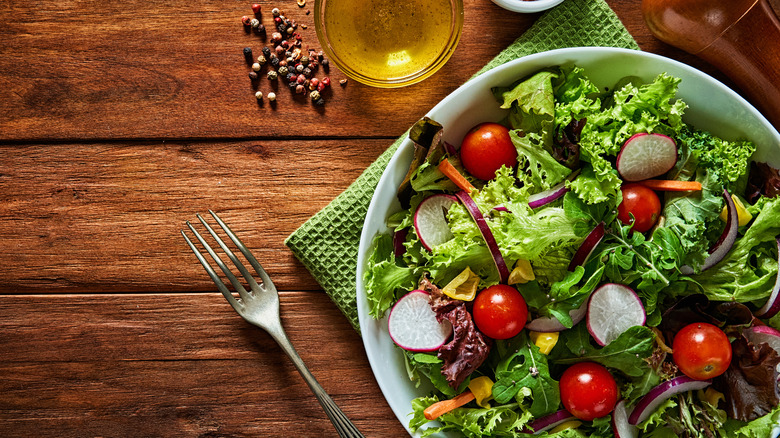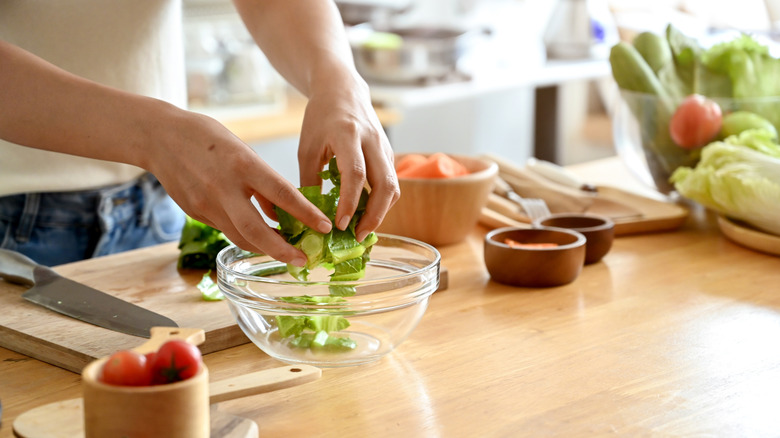The Extra Step You Shouldn't Skip For The Crispest Salads
A crisp salad is a wonderful counterpoint to any entree, but how do you achieve this texture while still using your favorite greens? Chef David Kirschner, CEO and founder of dineDK Private Dining, had some thoughts on this he was eager to share with us. His business specializes in catering private events, so he has no small amount of experience catering to individual tastes.
"You can use shaved cabbage along with delicate greens, or incorporate julienned root vegetables (like raw beets, carrots, celery root, sunchokes, or radish) into the salad greens to give it more body," he says. Even chefs with serious knife skills have trouble cutting uniform slices of firm vegetables with enough thickness to maintain a crunch, but thin enough to work in a salad. It's best to use a mandoline or V-slicer when available, but shaving off slices with a vegetable peeler also works well in a pinch.
"Remember when working with raw vegetables, after you slice them thinly or into a julienne, soak them in ice water for at least 15 minutes before drying them off and adding them to the salad," Kirschner says. "This will ensure they are extra crispy." The more water in a vegetable, the crunchier it will be, so any method that adds moisture is a great trick. The key is to keep moisture in the vegetables but away from your leafy greens as much as possible.
Dressing tips for a crisper salad
A crisp salad can be difficult to achieve when you lean on a dressing for flavor. For a more flavorful salad, marinate vegetables in your dressing beforehand, reducing the amount you need to pour on your leafy greens directly. While added moisture to beets, carrots, or radishes may make them crispy, it tends to make arugula, lettuce, and spinach wilt over time.
If you really want to keep your salad greens crisp, the more flavorful a salad dressing is, the less you'll need. The trusted ratio for a perfect salad dressing ideal for quick vegetable marinades is simple: three parts oil, two parts vinegar, one part Dijon mustard, and one part water. Adding a couple hefty pinches of salt is a great way to open up the flavors of your ingredients, further reducing the amount you'll need for a tasty salad.
Finally, be sure to avoid bruising your greens. After you've gently dried the leaves, toss them with dressing in a wide shallow bowl. By using something wide and shallow rather than narrow and deep, you reduce the amount of tossing required to thoroughly and uniformly coat the leaves. If you don't want to toss your greens and are worried about overdressing them, a great way to pack every bite with moisture without sacrificing crispness is to dress them in layers. This is an easy way to ensure your dressing evenly covers everything while still using the smallest amount required for great taste.


